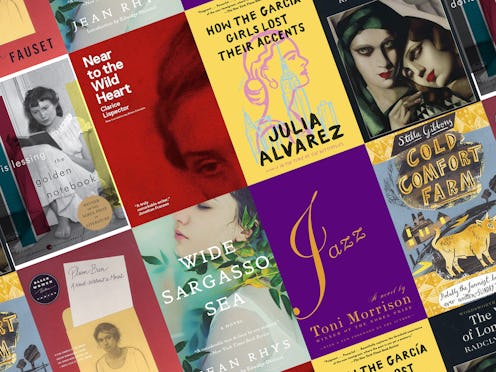Books
15 Classic Novels You Missed In College That You Need To Read Now

If you're done with college and classrooms, back-to-school season might leave you feeling a little bit nostalgic for the days when there was someone telling you what to read. Don't worry, though, because I've picked out these classic novels you may have missed in college that will help you beat the blues of not being in school anymore.
Any English major will tell you that there's a world of difference between reading a book for school and reading it for fun. That goes double for classic novels, which are often headier than their contemporary counterparts. Even if you had to read some of the books on this list in college, you should give them a second reading by choice.
With that being said, I have endeavored to choose 15 classic titles that aren't often taught in schools and universities. Although you may recognize some of the authors below, the goal of this list is not to give you 15 books you should re-read right now, but instead to show you some literary classics you may have missed during your school days.
Here are 15 classic novels you might have missed in college that I've picked out for you below:
'The Last Man' by Mary Wollstonecraft Shelley
In this lesser-known novel, Frankenstein author Mary Wollstonecraft Shelley tells the story of humanity's rapid extinction from a mysterious plague, which has left her protagonist as the sole surviving human.
'Plum Bun' by Jessie Redmon Fauset
First published in 1928, Jessie Redmon Fauset's Plum Bun follows Angela, a young black woman who passes for white, as she moves to New York to start a new life following her parents' deaths.
'The Well of Loneliness' by Radclyffe Hall
The first overtly lesbian novel published in English, Radclyffe Hall's The Well of Loneliness tells the story of Stephen, an "invert" who is able to put a name to her attraction toward women after reading books in her father's academic collection.
'The Joy Luck Club' by Amy Tan
Told in a series of vignettes that span decades, Amy Tan's The Joy Luck Club centers on a group of Chinese immigrant women and their American-born daughters, who grow up in San Francisco.
'Cold Comfort Farm' by Stella Gibbons
Sent to live with her distant relatives in the country after her parents' deaths, Flora finds the titular farm inhabited by people with problems belonging to a bygone era, and she makes it her business to modernize their way of life.
'Jazz' by Toni Morrison
After her husband shoots and kills his lover, Violet attacks the girl's corpse with a knife, earning herself the nickname, "Violent." She later attempts to connect with the dead girl's family, searching for personal peace during a period of great public and private upheaval.
'Wide Sargasso Sea' by Jean Rhys
In her prequel to Charlotte Brontë's Jane Eyre, Jean Rhys centers on Antoinette Cosway, the young woman who will become Bertha Mason — Mr. Rochester's first, locked-away wife.
'Quicksand' by Nella Larsen
The first novel from Passing author Nella Larsen, Quicksand focuses on Helga, a biracial American woman who feels disconnected from both her Danish and West Indian ancestry.
'Cranford' by Elizabeth Gaskell
Set in the titular country town during the Victorian period, Elizabeth Gaskell's Cranford centers on the middle-aged Jenkyns sisters, Matty and Deborah, as they move in and through their local society.
'How the García Girls Lost Their Accents' by Julia Alvarez
Immigrating to the U.S. from the Dominican Republic in 1960, the García sisters — Carla, Sandra, Yolanda, and Sofia — experience intense culture shock as they adjust from a life of wealth to one pockmarked by prejudice in this novel, told in reverse, from Julia Alvarez.
'The Bell Jar' by Sylvia Plath
Published shortly before the author's death, this semi-autobiographical novel follows Esther, a young woman frustrated with the restrictions of life in the mid-20th century U.S., as she becomes mentally ill.
'Their Eyes Were Watching God' by Zora Neale Hurston
Years after she left, Janie Crawford returns to her hometown with a personal story of black women's empowerment in this classic novel from Barracoon author Zora Neale Hurston.
'The Golden Notebook' by Doris Lessing
A successful novelist who chronicles her life in four separate, concurrent volumes attempts to stitch her own narrative together into a single, cohesive story in this novel from Nobel laureate Doris Lessing.
'Near to the Wild Heart' by Clarice Lispector
Originally published in 1943, Clarice Lispector's stream-of-consciousness novel centers on Joana, a young woman concerned with the higher questions of being, and tells her life through shifts forward and backward in time.
'Possession' by A.S. Byatt
A.S. Byatt's 1990 Booker Prize-winning novel weaves together two love stories — of a pair of 19th century poets and of two academics studying their work.
This article was originally published on